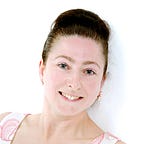Sep 2015 — Setting the sails
Our first big event at the CTR was the annual boot camp, which included sailing two Viking ships in Roskilde under expert tuition (see photo of our skipper with me at the tiller). We rowed out into the bay (surprisingly easy) and then voyaged afar (well, to the other side of Roskilde) using wind power alone. It filled our handwoven woollen sail. This was a wonderful experience. It was cold when we finally got back inside the museum and it was a particularly welcome moment to be introduced to Underberg (see video to learn the useful universal symbol for this tipple).
Back at the CTR, we learnt tried and tested techniques for publicising our research work and new ways of doing so. Vincent Hendricks, the Bubble Man, introduced us to The Conversation, which offers a daily digest of on-going research findings. We also heard about the CTR’s achievements in its 10-year existence and plans future success — to which we were all invited to contribute. It was all very inspirational. The challenge is to communicate what the CTR has done and what we are all doing now to help secure its future.
We new fellows each gave a paper on our research aims (see photo). I shared some of the most intriguing examples of knitted caps from the c16th. This is the cap (inventory number MoL 5013) with which I opened my presentation. Information about it is online at the Museum of London’s website. I finished with a piece of contextual evidence, a tin-glazed tile (inventory number MoL A25388), dated 1536–1565, showing a man wearing what is probably a knitted cap. I’m sorry I can’t include the photo here because of challenging copyright restrictions.
Hilary Davidson (then curator of fashion & decorative art) and I spent a lot of time working with the Museum of London’s c16th caps from 2008 to 2013 and were able to put some technical data online. New photography provided high-quality images but conventional digital pictures don’t show the level of detail knitters require to count stitches and inspect the yarn. Finding ways of representing three-dimensional textiles in 2-D images online is something of a challenge I am going to face.
My office-mate at the CTR, Susanne Lervad, invited me to join her on a visit to the Nationalmuseet’s site at Brede, where I met Anne-Lisbeth Schmidt, and to the Museum of Copenhagen, where we saw material recently excavated in Copenhagen’s Metro extension programme with Vivi Lena Andersen (see photo). Ann-Lisbeth has built a database of the skin clothing in the National Museum’s collection and I am hoping to collaborate with her and the technical team behind the online interface to help me design and build mine. Susanne is working on textile terminology relating to leather, fur and skin garments. I have heard that fur was sometimes incorporated into woollen hats so this is a topic I need to investigate too. Susanne is planning visits to modern-day fur specialists as part of her project, which is way outside my ethical comfort zone. This is another challenge I need to meet.
Vivi is currently writing up her doctorate. Between us, we represent the top and bottom of the early modern wardrobe — I’m researching hats and she is researching shoes. A knitted hat dated to the 1600s found at the City Hall Square excavation (see photo) has been on display at the museum but sadly no longer. The Museum of Copenhagen is being boxed up and moved to a c19th building in Stormgade, which is scheduled to open in “a couple of years”. I hope their new home proves less challenging to achieve than mine (full story to follow).
So, September presented me with several challenges: chief among them is how to make my work interesting to online followers without being able to publish photographs which show the knitted material I am studying. I will also have to negotiate reproduction agreements for images to go into my online database so that people who want to examine the construction of the caps can see the important details.
I wonder what the Vikings identified as their challenges when they set off on ventures across the oceans? Communication — sagas told their tales without pictures. Navigation — they read the world around them in three dimensions with no need for 2-D maps. Clothing — no qualms about animal products there. New homes — oh yes, that reminds me, TLG and I made three trips to IKEA this month.
